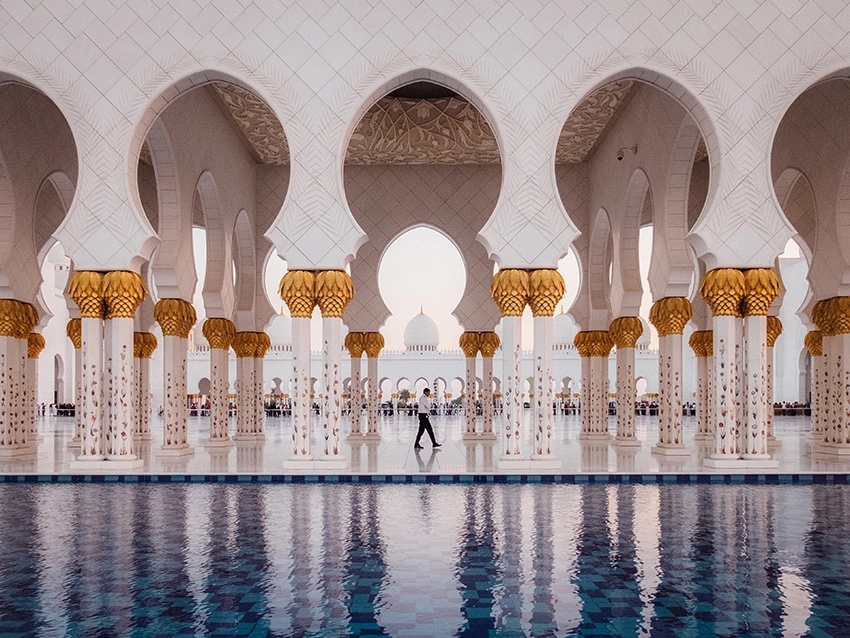

5 Video Design Principles You Should Know to Amplify Event Content

As with all event design elements, there are best practices for creating stunning event video. After all, something that is designed on a computer screen may look different projected onto a large display. It’s crucial to know these five basic principles of video design to maximize the effect of content on event-goers. This guide explores the most important things to keep in mind when using video to amplify event content – keep reading to learn more.
Background of Video Design
When it comes to events, from the theatre to concerts to corporate presentations and more, video design plays a crucial role. Integrating motion graphic, camera feeds and projection mapping into these events makes content more attractive. Engaging the audience is key – and it’s accomplished through smart, well-informed video design.
So why is it important to know video design principles? First, it’s crucial to understand how human perception works. Displaying content is, at its basic, a form of communication. In order to communicate visually in an effective way, a video designer needs to know how humans absorb, understand and translate visual information to deliver a message to the brain.
Humans don’t process images like a camera. A camera has a wide field of vision of 180 degrees, whereas the brain has a narrow field of vision of only two degrees. This causes a common problem, in that event content developers end up creating content for a camera that can grab information in one piece – however, the brain remembers bits and pieces of the whole image overall.
Five Video Design Principles
For spectacular video design, follow these five principles, which also support sharp overall design principles, such as focal point, contrast of shape or balance created through the use of space.
1) Creating a Focal Point and Emphasis

The first principle of video design to note is the focal point. Often, the viewer knows what the focal point of a video is by it being the main, central figure. However, there are other, more creative ways to create the focal point within a video, from placement on the screen to color to subject matter. Using contrast, unique shapes, strong colors or light, a video designer can attract the eye of the viewer to a given part of the video.
2) Repetition / Rhythm

The next video design principle is repetition, or rhythm. From lines to shapes to colors to textures and more, creating a sense of repetition will add interest and intrigue to video content. In order to make a scene coherent, it may be necessary to repeat certain elements in video content. A sense of rhythm can also be created by adding patterns to videos.
3) Balance / Imbalance

All of the elements and objects added to video content carry a specific visual weight. This weight depends on the size of the canvas, but also the color, value and contrast. The video’s composition doesn’t need to be perfectly balanced, or symmetrical to create a visual equilibrium. In fact, an imbalance can intensify the emotionalstrength of the content being displayed.
4) Hierarchy
Creating a sense of hierarchy is crucial to attracting the viewer's eye to important pieces of information. The previous principles help reinforce the content’s visual hierarchy. It’s generally recommended to include important elements and less important elements in event video content. In a video, it’s key to emphasize one subject that tells a story. For a quick example: people are normally at the top of a hierarchy, whereas the background is at the bottom. In general, there are other principles of design that support hierarchy, such as contrast, color, light and unity.
5) Unity / Harmony
Unity is achieved when all the elements of video design are used in conjunction with each other successfully. This is the main goal of a video designer. How are all of the scenes, on-screen objects, subject matter working together? Getting all the pieces to come together, through repetition of shape, strong contrast, definitive focal point, balanced composition and more, create a unified video and compelling message.
Bonus Tip) Don’t Be Limited to Just Video
 Of course, video design is only one aspect of creating great event content. Sticking to video limits the designer’s capability to extend their message. From music, voiceovers and sound effects, to slideshows, live feeds and projection elements, there’s plenty of supporting design elements that will truly amplify event content. Take advantage of these whenever possible to support video design.
Of course, video design is only one aspect of creating great event content. Sticking to video limits the designer’s capability to extend their message. From music, voiceovers and sound effects, to slideshows, live feeds and projection elements, there’s plenty of supporting design elements that will truly amplify event content. Take advantage of these whenever possible to support video design.
In Conclusion
In conclusion, the five golden rules for developing event video content are:
1. Use a strong focal point to draw the viewers’ eyes to the most crucial piece of information.
2. Use repetition to create a sense of harmony, adding interest and intrigue to video content.
3. Use balanced and imbalanced elements within video content to affect the emotional strength of video content.
Use hierarchy to create a sense of importance among the on-screen objects, such as text information, human subjects, foregrounds, backgrounds, scenery, etc.
4. Create a sense of unity and craft a compelling message by using the elements of video design in conjunction with one another.
5. Don’t be limited by video only – that’s only one piece of the puzzle. Adding sound, static images, live feeds, projection elements and more help contribute to the overall communication of a message.

